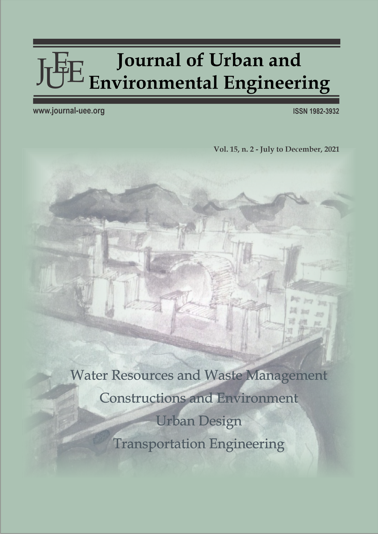VALORIZATION OF SUGARCANE AND ORANGE BAGASSES IN THE BIOSORPTION PROCESS FOR REMOVAL OF DYE FROM THE SYNTHETIC AQUEOUS SOLUTION
Abstract
Effluents from textile industries contain high dye concentrations, which, when inappropriately used, may interference with the process of light absorption by plants, impairing the photosynthesis process. Based on such assertions, this study aimed to analyze the biosorption process with sugarcane bagasse (SB) and orange bagasse (OB) for removal of the dye Neolan Black WA. For evaluating the influence of the pH of the dye solution, of the chemical treatment of the biosorbent and of the type of biosorbent on the adsorption process, a factorial design 2³ was elaborated. Then, the data from the experiments were statistically analyzed by analysis of variance (ANOVA) and Tukey test. In the Tukey test, the averages for dye removal were higher for SB than for OB, with removals of 100% and 65%, respectively, and the best conditions obtained for SB were pH 2 solution and chemically treated material. The results for OB were pH 2 and material without chemical treatment. The SB and the OB, before and after the treatment with sulfuric acid, were characterized using scanning electron microscopy (SEM) and adsorption and desorption isotherms of N2 (BET/BJH), in which it was possible to observe structural changes in both materials due to the acid action.Downloads
Download data is not yet available.
Downloads
Published
2021-04-09
Issue
Section
Articles




